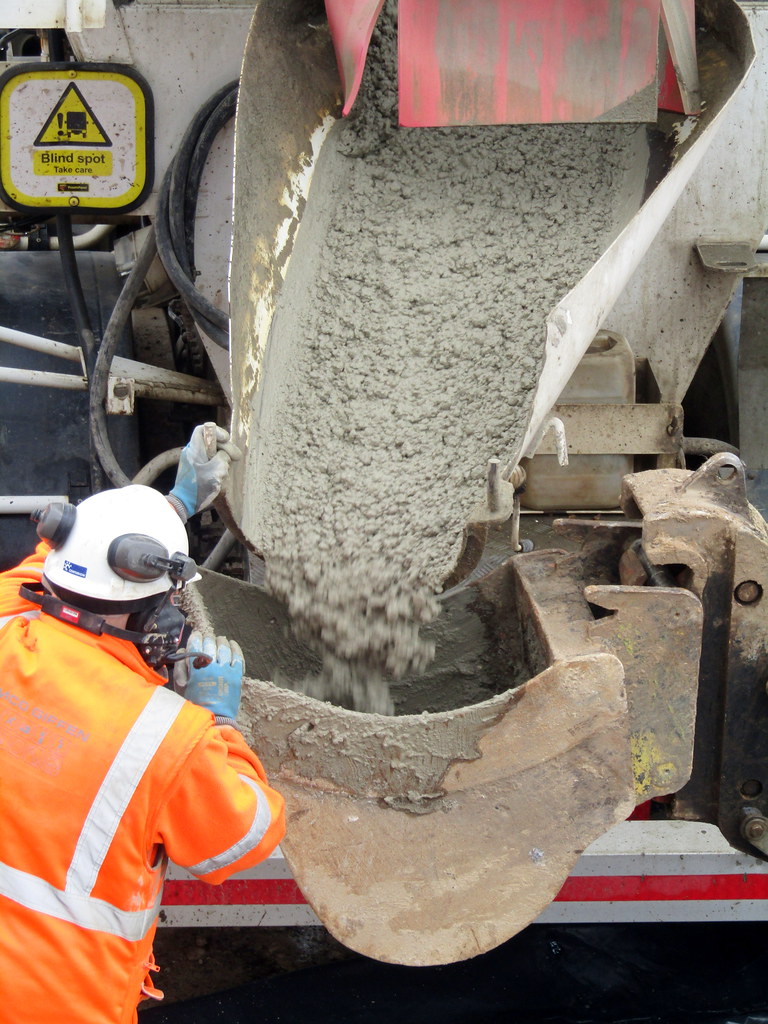MF Dispersant, also known as Melamine Formaldehyde Dispersant, is a specialized chemical additive widely used in concrete admixtures to optimize the properties of concrete. This detailed exploration covers what MF Dispersant is, its chemical composition, how it functions in concrete mixtures, its applications, benefits, limitations, and environmental considerations.
What is MF Dispersant?
MF Dispersant is a type of superplasticizer, a high-performance chemical additive designed to improve the workability, strength, and durability of concrete. It is derived from melamine formaldehyde, a synthetic polymer created through the chemical reaction of melamine (a nitrogen-rich organic compound) and formaldehyde (a simple organic compound). This polymer is highly effective at dispersing cement particles within a concrete mix, preventing them from clumping together and ensuring a smooth, uniform consistency.
In concrete production, cement particles tend to stick together due to electrostatic and van der Waals forces, forming clumps that require more water to achieve a workable mix. Adding too much water, however, weakens the final concrete by increasing the water-to-cement ratio, which leads to more voids and reduced strength. MF Dispersant addresses this issue by acting as a dispersing agent, breaking apart these clumps and allowing the concrete to remain fluid and workable with significantly less water.
How MF Dispersant Works in Concrete
The primary role of MF Dispersant is to enhance the performance of concrete by improving its flow and reducing water content. Here’s how it works:
- Dispersion of Cement Particles:
- Cement particles in a concrete mix naturally attract each other, forming agglomerates that hinder flow. MF Dispersant molecules carry a negative charge that adsorbs onto the positively charged surfaces of cement particles. This creates electrostatic repulsion, causing the particles to spread out evenly in the mix.
- The result is a more fluid concrete mix that flows easily without requiring additional water.
- Water Reduction:
- By dispersing cement particles effectively, MF Dispersant allows for a reduction in water content by 10-20% (sometimes more, depending on the mix design) while maintaining the desired workability. A lower water-to-cement ratio produces a denser, stronger, and more durable concrete structure.
- Improved Workability:
- The enhanced flowability makes the concrete easier to pour, place, and mold, even in complex shapes or heavily reinforced structures. This is particularly valuable for applications requiring precision, such as precast concrete elements or intricate architectural designs.
- Enhanced Strength and Durability:
- A lower water-to-cement ratio reduces the number of microscopic pores in the hardened concrete, improving its compressive strength and resistance to environmental factors like freeze-thaw cycles, chemical attacks, and abrasion.
Applications of MF Dispersant in Concrete
MF Dispersant is used in a variety of concrete applications where high performance is critical. Some key uses include:
- High-Strength Concrete:
- MF Dispersant is ideal for producing concrete with exceptional compressive strength, often used in structural components like columns, beams, and foundations for high-rise buildings, bridges, and dams.
- Self-Compacting Concrete (SCC):
- SCC is a type of concrete that flows under its own weight, filling molds and formwork without the need for mechanical vibration. MF Dispersant enables this high flowability, reducing labor costs and improving the quality of the finished product.
- Precast Concrete:
- In precast concrete manufacturing, where elements like beams, panels, and pipes are cast off-site, MF Dispersant ensures consistent workability and high-quality surface finishes. Its ability to reduce water content also accelerates curing times, improving production efficiency.
- High-Performance Concrete:
- For projects requiring concrete with enhanced durability, such as marine structures or pavements exposed to harsh weather, MF Dispersant helps create a dense, impermeable matrix that resists water ingress, chemical corrosion, and wear.
- Shotcrete and Pumped Concrete:
- MF Dispersant improves the pumpability of concrete, making it easier to transport through hoses for applications like shotcrete (sprayed concrete) or long-distance pumping in large construction projects.
Benefits of Using MF Dispersant
The incorporation of MF Dispersant in concrete admixtures offers numerous advantages, making it a popular choice in modern construction:
- Superior Workability:
- MF Dispersant allows concrete to flow smoothly, even in congested reinforcement or complex molds, reducing the effort required for placement and finishing.
- Increased Strength:
- By lowering the water-to-cement ratio, MF Dispersant produces concrete with higher compressive and tensile strength, ideal for demanding structural applications.
- Improved Durability:
- The denser concrete matrix resists environmental degradation, such as cracking from freeze-thaw cycles, sulfate attacks, or chloride penetration in coastal areas.
- Cost Efficiency:
- The ability to reduce water content often allows for a reduction in cement usage (a costly and carbon-intensive component) without compromising strength, lowering material costs and environmental impact.
- Time Savings:
- Enhanced workability and faster setting times (due to reduced water) speed up construction processes, especially in precast and self-compacting concrete applications.
- Versatility:
- MF Dispersant is compatible with a wide range of cement types and other admixtures, making it adaptable to various mix designs and project requirements.
Limitations and Challenges
While MF Dispersant offers significant benefits, it also has some limitations and challenges:
- Cost:
- Melamine formaldehyde-based superplasticizers can be more expensive than other dispersants, such as lignosulfonates or polycarboxylate ethers (PCEs). This may limit their use in cost-sensitive projects.
- Setting Time Sensitivity:
- MF Dispersant can sometimes accelerate or retard the setting time of concrete, depending on the dosage and mix conditions. Careful mix design and testing are required to avoid issues like premature setting or delayed curing.
- Compatibility Issues:
- While generally compatible, MF Dispersant may interact unpredictably with certain cements or other admixtures, requiring pre-testing to ensure performance.
- Environmental Concerns:
- The production of melamine formaldehyde involves petrochemicals, contributing to carbon emissions and resource depletion. Additionally, MF Dispersant is not biodegradable, raising concerns about its long-term environmental impact, especially in waste or runoff scenarios.
Environmental Considerations and Alternatives
The environmental impact of MF Dispersant is a growing concern in the construction industry, which is increasingly focused on sustainability. The production of melamine formaldehyde relies on non-renewable resources and generates greenhouse gas emissions. Furthermore, its non-biodegradable nature means it persists in the environment, potentially contributing to pollution if not properly managed.
To address these issues, researchers and manufacturers are exploring bio-based dispersants as alternatives to synthetic superplasticizers like MF Dispersant. Examples include:
- Modified Polysaccharides: Derived from renewable resources like starch, cellulose, or lignin, these bio-based dispersants offer similar dispersing capabilities with a lower environmental footprint.
- Polycarboxylate Ethers (PCEs): While still synthetic, PCEs are often more efficient than MF Dispersants, requiring lower dosages and offering improved performance in some applications.
- Natural Polymers: Compounds like tannins or plant-based extracts are being investigated for their potential as eco-friendly dispersants.
Despite these advancements, MF Dispersant remains widely used due to its proven performance, cost-effectiveness, and availability. However, adopting sustainable practices, such as optimizing mix designs to minimize dispersant use or combining MF Dispersant with greener additives, can help balance performance and environmental goals.
Practical Considerations for Use
When using MF Dispersant in concrete admixtures, several factors should be considered to ensure optimal performance:
- Dosage:
- The dosage of MF Dispersant typically ranges from 0.5% to 2% by weight of cement, depending on the desired workability and strength. Overdosing can lead to issues like segregation or excessive bleeding, while underdosing may not achieve the desired dispersion.
- Mix Design:
- The effectiveness of MF Dispersant depends on the concrete mix design, including the type of cement, aggregates, and other admixtures. Trial mixes and testing are essential to fine-tune the formulation.
- Storage and Handling:
- MF Dispersant is typically supplied as a powder or liquid. Proper storage (e.g., in cool, dry conditions for powders or sealed containers for liquids) is necessary to maintain its efficacy.
- Health and Safety:
- While MF Dispersant is generally safe when handled properly, precautions should be taken to avoid inhalation of powders or prolonged skin contact with liquid formulations, as formaldehyde-based compounds can be irritating.
Conclusion
MF Dispersant, or Melamine Formaldehyde Dispersant, is a highly effective superplasticizer that plays a critical role in modern concrete production. By dispersing cement particles, reducing water content, and improving workability, it enables the creation of high-strength, durable, and versatile concrete suitable for demanding applications like high-rise buildings, bridges, precast elements, and self-compacting concrete. Its benefits include enhanced strength, improved workability, cost savings, and compatibility with various mix designs.
However, its synthetic nature and environmental impact prompt ongoing research into sustainable alternatives like bio-based dispersants. By carefully considering dosage, mix design, and environmental implications, MF Dispersant can be used effectively to meet both performance and sustainability goals in concrete construction. For further details on specific products or suppliers, consulting industry resources or manufacturers is recommended.

